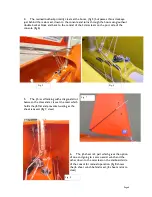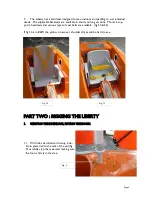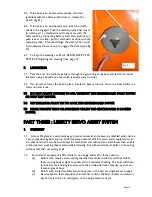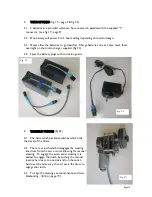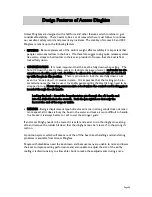
Page 18
NB. Access Dinghy generally recommends that the boat should be controlled using the
same method as the sailor's wheelchair is driven, utilising the sailor's most moveable and
agile part, whether it be a hand, foot, chin etc. We do not generally recommend sip and
puff control systems except in those circumstances where other systems are unsuitable.
Sip and Puff can use unnecessarily complicated electronics which are therefore more
prone to failure, and add an unnecessary complication and expense as each sailor needs
their own personal module to guard against spread of infection. Only in North America
are sip and puff systems widely used.
7.2 Mainsheet Only Switches (MO Switch). When the MO Switch is activated the jib
sheet winch circuit is de-latched, so that when the Primary Control Switch is worked,
only the Mainsheet winch responds. Press the MO Switch again and both main and jib
sheet winches will work in sync. A red light is on when the MO Switch is activated.
7.3 There are 3 types of MO Switches.
(a) Finger controlled (latched) press button. (fig 26—page 17)
(b) Magnetic reed switch (latched) activated by a magnet attached to finger,
cheek or other moving body part. (fig 28—page 17)
(c ) Sip or puff (latched) switch (fig 29—page 17)
NB. Latching means the winch stays on when the switch is activated and must be pressed
again to stop it. Momentary switches are only "on" while being activated.
8.
MAINTAINANCE AND TROUBLESHOOTING.
8.1 We advise a club or owner to appoint a handy, practical volunteer to take charge of
the electrics, ideally someone with an electrical background.
8.2 This equipment has to be serviced regularly if it is to remain free of corrosion and
serviceable. Prior to leaving our factory all terminals, plugs and corrodible parts were
sprayed with “Corrosion Guard”, a spray can of which is supplied. We advise you to
spray exposed battery terminals regularly, and inspect all the electrical components regu-
larly, noting and treating any signs of corrosion.
8.3 Do not allow any leads and plug ends to remain immersed in water. When batteries
are removed plug the blue battery lead into the dummy connector attached to the side of
Fig. 30
Fig. 31

